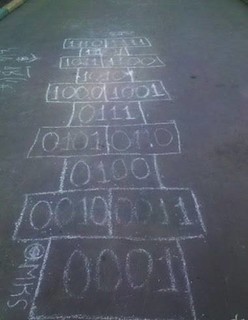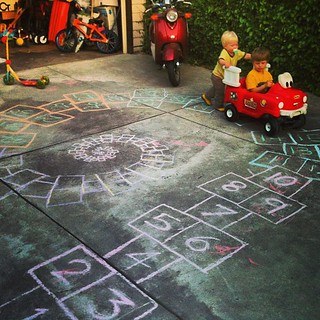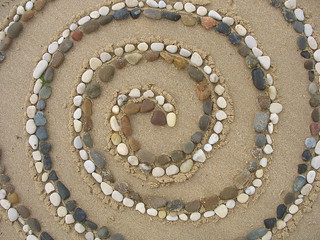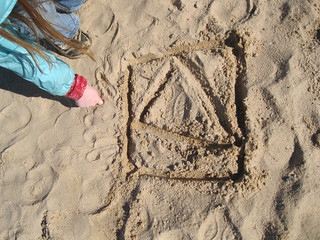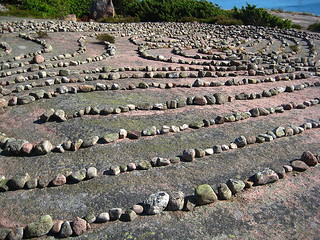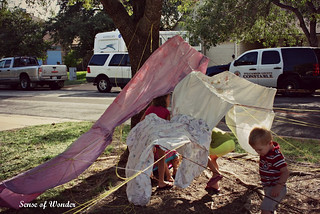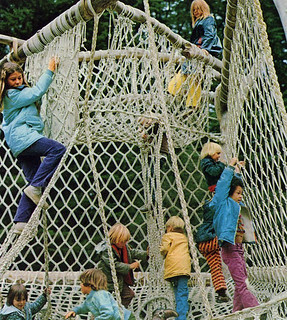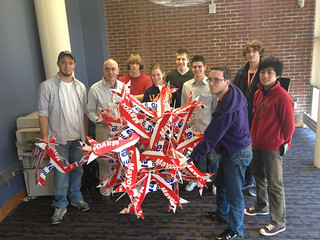Inspired by Calculus: Thursday Math Circle Week 1
This Math Circle report has three parts. The first part summarizes “whys” behind club activities, and gives ideas on what to do at home. The second part has samples of what the group said and done, from Yelena McManaman. The third part has links to resources.
I will keep adding our pictures to a set on Flickr. Thank you for the photos, Lynna Mattia!
The main three principles:
1 – Make math your own, to make your own math
2 – Have adventures
3 – Do it with friends

Posted in Grow
Do your little kids draw grids?
What do you see when you look at drawings by little kids?
For example, grown-up artists noticed that many young artists draw big heads with legs. The more people talked about these shapes, the more meaning they found. By now developmental psychologists developed big theories of development around these simple observations: “Tadpole drawings appear during the pre-schematic stage…”
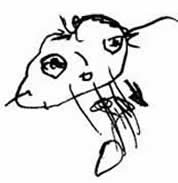
Grown-up mathematicians noticed that many young mathematicians draw grids. Round grids, square grids, grids within grids!
Have you kids made any grids? Please send us pictures and stories!

Here are some masterpieces from Michael Kelly.
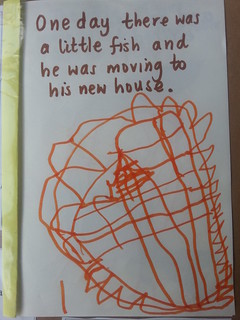

Michael writes:
Our youngest son Francis began drawing pattern grids and intersecting lines when he was about 3 years old. He seemed to draw in a way that resembled his early language learning. He didn’t draw discrete objects but would rather make patterns and connections across the whole space. In a similar way, in his speech he did not repeat individual or ‘favourite’ words, but he often copied the cadences of, or flow within, a sentence.
Strapped into his baby seat in the car he once interrupted a stream of jokes and laughter between four adults which he had been silently witnessing. When he had noticed the pattern he gave his own version of a line of ‘speech’ followed by his own appreciative laughter. His timing was great. Everyone stopped… none of us had considered how a 15 month old child might be making sense of the vocal expressions and social conventions of our adult friendships!
Franny’s drawing showed awareness of relationships between local shapes and overall design, and the negative shapes were sometimes integrated too.
We already have a bit of theory on grids and kids. Grids are to individual cells as paragraphs are to words (in Michael’s example), or songs are to notes. The whole grid is bigger than the sum of its parts, and kids think in terms of the whole of the thing! But some children start by drawing individual cells next to one another, like so:
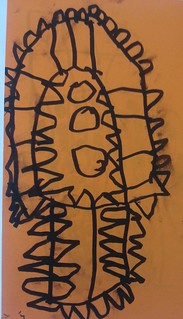
Even older kids and teens may draw individual cells when they work with new grid ideas. Here is another example from Math in Your Feet:
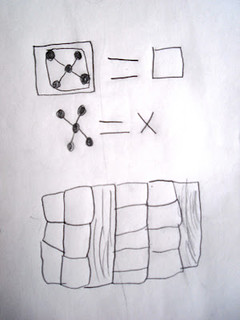
At other times, children make grids by having long lines cross in many places, so the cells multiply:
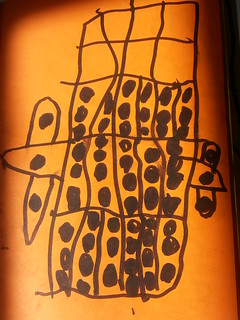
We have four chapters of grid games in the Moebius Noodles: Adventurous Math for the Playground Crowd book. Check them out!

Posted in Make
Inspired by Calculus: Tuesday Math Circle Week 1
This is a quick report about our new local Math Circle. To all who asked, yes, we will produce online courses and organized materials for this content! Meanwhile, there will be these reports.
On the first meeting, Circle participants introduced themselves and started to explore infinity. Here are some purposes (whys) that drive our activities. I also suggest things to do at home – IF you feel like it, and IF it comes up. Be gentle, have fun.
The main three principles:
1 – Make math your own, to make your own math
2 – Have rich adventures
3 – Do it with friends
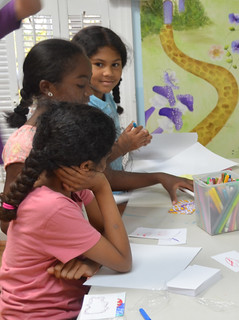
I will put all photos into this set on Flickr: http://www.flickr.com/photos/26208371@N06/sets/72157636116988425/
Posted in Grow

